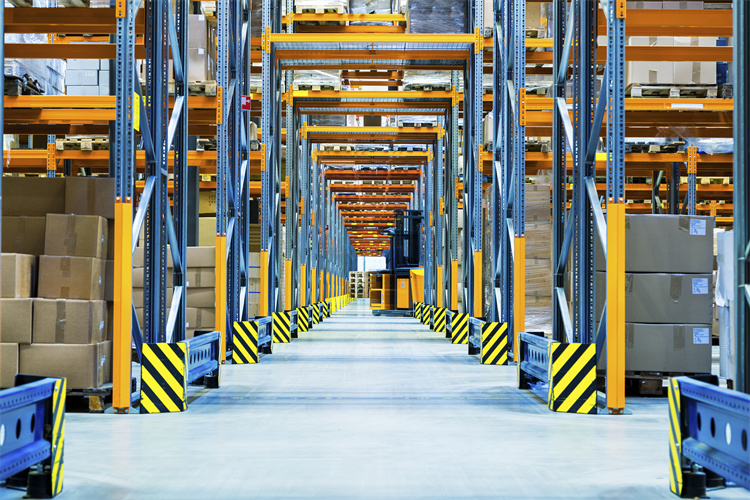Integrated Logistics Services: Weighing the Benefits and Challenges

Integrated logistics services combine various supply chain components into a unified system. This approach plays a crucial role in modern supply chain management. It enhances efficiency and customer service by aligning all logistics functions. The global logistics market is growing rapidly, with projections reaching USD 5,951.0 billion by 2030. As you explore shipping logistics services, you'll discover both benefits and challenges. These include streamlined operations and potential complexities. Understanding these aspects helps you make informed decisions in a competitive market.
Understanding Integrated Logistics Services
Definition and Scope
Integrated logistics services encompass a comprehensive approach to managing supply chain activities. You will find that these services include several key components:
Key components of integrated logistics
Transportation: This involves the movement of goods from one location to another, utilizing various modes such as air, land, sea, and rail.
Warehousing: Facilities store goods until they are needed, ensuring timely availability.
Inventory Management: This component tracks stock levels to prevent shortages or overstocking.
Order Processing: Efficient handling of customer orders ensures prompt delivery and satisfaction.
Information Technology: Advanced systems facilitate real-time tracking and data sharing across the supply chain.
Role in supply chain management
Integrated logistics services play a pivotal role in supply chain management. By aligning all logistics functions, you can achieve a seamless flow of goods and information. This integration enhances efficiency, reduces costs, and improves customer service. Businesses that adopt integrated logistics often gain a competitive edge in the market.
Historical Context
Understanding the historical context of logistics services provides valuable insights into their evolution and current practices.
Evolution of logistics services
Logistics has its roots in military and imperial methods, serving as the backbone of global trade and commerce. After World War II, logistics experienced significant advancements. The expansion of road networks, improvements in freight vehicles, and the development of air transport marked a new era. Since the 1950s, integrated logistics has evolved towards a holistic perspective. This shift has led to the integration of all logistics functions, streamlining operations and enhancing efficiency.
Impact of technology on integration
Technology has profoundly impacted the integration of logistics services. Information technology advancements have enabled real-time data sharing and collaboration across the supply chain. You can now track shipments, manage inventory, and process orders with unprecedented accuracy and speed. This technological integration not only optimizes logistics operations but also supports strategic decision-making.
By understanding these aspects, you can appreciate the significance of integrated logistics services in today's dynamic business environment.
Benefits of Integrated Logistics Services

Efficiency and Cost Reduction
Streamlining operations
Integrated logistics services transform your supply chain into a cohesive, data-driven system. By integrating all activities, you streamline order processing, inventory management, and transportation routes. This approach eliminates bottlenecks and reduces waste. You achieve a seamless flow of goods and information, enhancing overall efficiency. Unlike traditional logistics, which often operates in silos, integrated logistics promotes collaboration and information sharing across departments.
Reducing overhead costs
With integrated logistics, you can significantly reduce overhead costs. The holistic approach optimizes all supply chain activities, minimizing unnecessary expenses. By aligning logistics functions, you cut down on redundant processes and improve resource utilization. This efficiency translates into cost savings, giving you a competitive edge in the market. Integrated logistics prioritizes continuous improvement, ensuring that your operations remain cost-effective over time.
Improved Customer Satisfaction
Faster delivery times
Integrated logistics services enhance your ability to deliver products quickly. By optimizing transportation routes and streamlining order processing, you reduce delivery times. Customers receive their orders faster, leading to increased satisfaction. The transparency and data visibility offered by integrated logistics allow you to track shipments in real-time, ensuring timely deliveries. This responsiveness sets you apart from competitors relying on traditional logistics models.
Enhanced service quality
You can elevate service quality through integrated logistics. The close cooperation between different departments ensures that customer needs are met efficiently. By leveraging advanced technologies, you provide accurate and timely information to customers. This proactive approach enhances the overall customer experience, building trust and loyalty. Integrated logistics focuses on improving customer experience, rather than merely reducing costs.
Flexibility and Scalability
Adapting to market changes
Integrated logistics equips you with the flexibility to adapt to market changes. The holistic approach allows you to respond swiftly to fluctuations in demand or supply chain disruptions. By integrating all logistics functions, you maintain a high level of adaptability. This agility enables you to seize new opportunities and navigate challenges effectively. Integrated logistics transforms traditional practices, offering efficiency and responsiveness.
Supporting business growth
As your business grows, integrated logistics supports scalability. The cohesive system accommodates increased volumes and expanded operations without compromising efficiency. By optimizing supply chain activities, you ensure that your logistics can keep pace with business growth. Integrated logistics represents a complete overhaul of traditional supply chain management, providing a robust foundation for future expansion.
Challenges of Integrated Logistics Services

Complexity and Coordination
Managing multiple stakeholders
In integrated logistics, you often deal with numerous stakeholders. Each party, from suppliers to customers, plays a crucial role in the supply chain. Managing these relationships requires careful coordination. You must ensure that everyone works towards common goals. This complexity can lead to challenges in aligning interests and expectations. Effective stakeholder management involves clear communication and collaboration. By fostering strong partnerships, you can navigate these complexities more efficiently.
Ensuring seamless communication
Communication stands as a cornerstone of successful logistics integration. You need to maintain seamless information flow across all parties involved. Miscommunication can lead to delays and errors. Advanced information technologies help facilitate real-time data sharing. These tools enable you to keep everyone informed and aligned. However, implementing such systems requires investment and training. By prioritizing effective communication, you enhance coordination and reduce the risk of disruptions.
Technological Dependence
Risks of system failures
Relying on technology brings its own set of challenges. Integrated logistics systems depend heavily on advanced technologies. While these tools offer numerous benefits, they also pose risks. System failures can disrupt operations and lead to significant losses. You must have contingency plans in place to address potential breakdowns. Regular maintenance and updates help mitigate these risks. By preparing for technological challenges, you ensure continuity and resilience in your logistics operations.
Need for continuous updates
Technology evolves rapidly, and staying current is essential. You need to continuously update your systems to remain competitive. This process involves both time and resources. Keeping up with technological advancements ensures that you leverage the latest tools for optimization. However, it also requires ongoing investment and adaptation. By embracing continuous improvement, you maintain a cutting-edge logistics operation that meets modern demands.
Cost Implications
Initial investment requirements
Implementing integrated logistics services involves significant initial investments. You need to allocate resources for technology, infrastructure, and training. These upfront costs can be substantial. However, they lay the foundation for long-term efficiency and savings. By carefully planning your investments, you can maximize the return on your logistics integration efforts. Strategic budgeting and resource allocation help manage these initial financial challenges.
Ongoing maintenance expenses
Beyond initial investments, you face ongoing maintenance expenses. Integrated logistics systems require regular upkeep to function optimally. This includes software updates, equipment repairs, and personnel training. These costs can add up over time. However, they are essential for sustaining efficient operations. By budgeting for maintenance, you ensure that your logistics systems continue to deliver value. Prioritizing maintenance helps you avoid costly disruptions and maintain a competitive edge.
JUSDA's Role in Shipping Logistics Services
Shipping Logistics Services Overview
JUSDA offers comprehensive solutions in shipping logistics, ensuring a seamless flow from raw material procurement to the delivery of finished products to end consumers. You benefit from JUSDA's expertise in lean supply chain management, which utilizes advanced technologies like big data, IoT, and cloud platforms. These technologies enable you to streamline operations and enhance efficiency across your supply chain.
JUSDA's Comprehensive Solutions
End-to-End Management: JUSDA manages every aspect of the supply chain, from sourcing raw materials to delivering finished goods. This holistic approach ensures that you experience a smooth and efficient logistics process.
Advanced Technology Integration: By leveraging cutting-edge technologies, JUSDA provides real-time data insights and predictive analytics. This allows you to make informed decisions and optimize logistics operations.
Integration with Global Supply Chains
JUSDA integrates seamlessly with global supply chains, offering you a robust network that spans multiple continents. This integration ensures that your products reach international markets efficiently and reliably. You can trust JUSDA to handle complex logistics challenges, thanks to its extensive experience and strong partnerships worldwide.
Benefits of JUSDA's Services
JUSDA's shipping logistics services offer numerous benefits that enhance your business operations and competitiveness.
Enhanced Efficiency and Reliability
Streamlined Operations: JUSDA's integrated approach reduces bottlenecks and improves the flow of goods. You enjoy faster delivery times and reduced logistics costs.
Reliable Service: With nearly two decades of experience, JUSDA ensures that your supply chain operates smoothly. You can rely on their expertise to handle unexpected disruptions and maintain consistent service quality.
Industry-Specific Solutions
JUSDA tailors its services to meet the unique needs of various industries, including high-tech manufacturing and 3C home appliances. You receive customized solutions that address specific challenges and opportunities within your sector. This industry-focused approach allows you to optimize your supply chain and drive profitability.
By choosing JUSDA, you gain access to a comprehensive suite of shipping logistics services that enhance your operational efficiency and support your business growth. Their commitment to innovation and excellence positions you for success in a competitive global market.
Strategies for Successful Integration
Best Practices
Choosing the Right Partners
Selecting the right partners is crucial for successful logistics integration. You should look for partners who share your vision and values. They must have a proven track record in logistics management. Evaluate their technological capabilities and ensure they align with your needs. Strong partners will help you streamline operations and enhance efficiency. Collaboration with the right partners can transform your supply chain into a well-oiled machine.
Implementing Effective Communication Channels
Effective communication is the backbone of integrated logistics. You need to establish clear and open communication channels. This ensures that all stakeholders are on the same page. Use advanced information technologies like logistics software and warehouse management systems. These tools facilitate real-time data sharing and coordination. By maintaining seamless communication, you can prevent misunderstandings and delays. This approach enhances collaboration and boosts overall efficiency.
Overcoming Challenges
Risk Management Strategies
Risk management strategies are essential in integrated logistics. You must identify potential risks and develop strategies to mitigate them. This includes preparing for system failures and supply chain disruptions. Implement contingency plans to ensure continuity. Regularly review and update your risk management strategies. By proactively managing risks, you can safeguard your operations and maintain reliability.
Continuous Improvement Processes
Continuous improvement is key to staying competitive. You should regularly assess your logistics processes and identify areas for enhancement. Implement feedback loops to gather insights from stakeholders. Use this information to refine your strategies and operations. Embrace new technologies and practices to keep your logistics system cutting-edge. By committing to continuous improvement, you ensure long-term success and adaptability in a dynamic market.

JUSDA Solutions
To provide you with professional solutions and quotations.
Integrated logistics services offer numerous benefits, such as streamlined processes and enhanced decision-making through collaboration. You can achieve improved operational efficiency by emphasizing data-driven decisions. However, challenges like managing complexity and technological dependence require strategic planning. Creating awareness among all departments is crucial for successful adoption. As you look to the future, integrated logistics will continue to evolve, enabling companies to predict errors, detect risks, and visualize contingencies. By embracing these strategies, you position yourself to thrive in a dynamic market environment.
See Also
Revolutionizing Warehouse Efficiency with Logistics Robotics
High-Tech Manufacturing Success Through Lean Logistics Navigation
Unlocking Enhanced Efficiency with JUSDA's Logistics Technology
Redefined Efficiency Through JUSDA's Logistics Enhancement
Exploring the Future Through Logistics Technology Innovations
